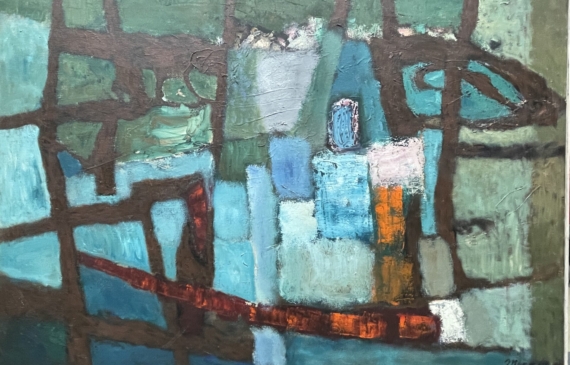
Joseph Meert (American, 1905-1989)
Window View, c. 1950
Oil on canvas, 30 H. x 40 W. inches
Signed lower right: Meert
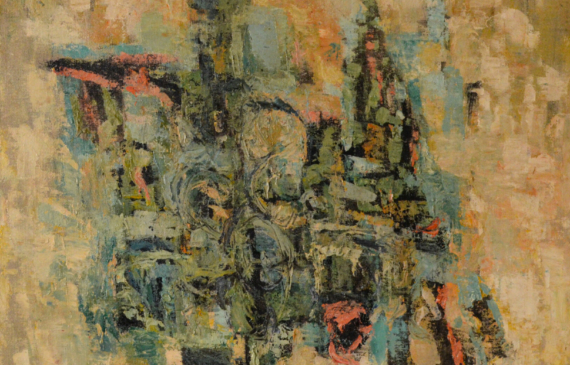
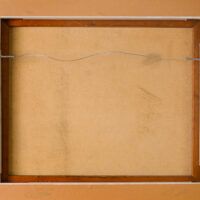
Joseph Meert (American, 1905-1989)
Untitled
Oil on canvas, 20 ½ H. x 25 W. inches
Signed lower right: Meert
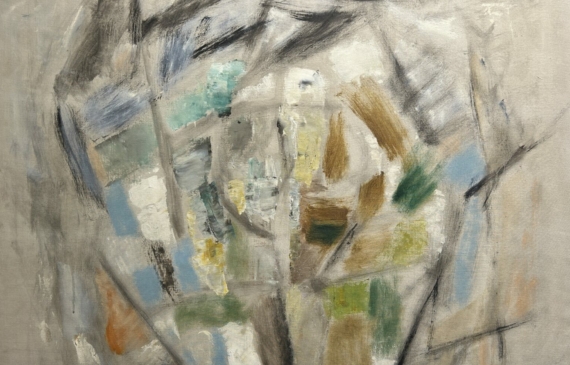
Joseph Meert (American, 1905-1989)
Untitled, circa late 1940s
Oil on canvas, 24 H. x 28 W. inches
Signed lower right: Meert
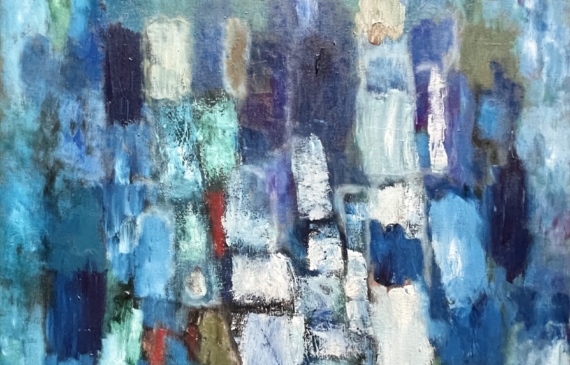
Joseph Meert (American, 1905-1989)
Totem #3, c. 1950
Oil on canvas, 36 H. x 30 W. inches
Signed lower right: Meert
Joseph Meert was born in Brussels, Belgium, in 1905 and immigrated to the U.S. with his family in 1910. He studied at the Kansas City Art Institute and at the Art Students League in New York City, where he was an early student of Thomas Hart Benton. Meert left New York for a year to travel and sketch in Europe. When he returned in 1931, he met Jackson Pollock, who was studying under Benton at the League during that time. The two remained good friends, and in fact Meert saved Pollock’s life one night in the early 40s. Pollock, on his way to visit Meert in below-zero winter weather, passed out drunk in a snowdrift, and Meert fortunately discovered him, preventing Pollock from freezing to death.
Meert married Surrealist painter Margaret Mullin in the early 1930s, and they moved to Kansas City in 1935, where Meert taught at the Kansas City Art Institute with Benton. During his time in Kansas, Meert was commissioned by the Works Progress Administration to paint post office murals. He completed the mural Contemporary Life in Missouri for the Marceline, Missouri post office in 1938. In 1940 he completed the Spring Pastoral mural for the Mount Vernon, Missouri post office, and the Harvesting mural for the Spencer, Indiana post office. Meert’s work was included in the 1944 Dallas Museum of Art exhibition of the National Serigraph Society, a group of artists involved in the WPA Federal Art Project.
Though Meert initially subscribed to Benton’s American Scene aesthetic, he pivoted toward abstraction in the mid-1940s, favoring oils, watercolor, and stained glass. In 1946, he and Mullin formed Spiral, a group of abstract artists (not to be confused with the Spiral Group of African-American artists from the 1960s). The group strove to find the problems of art and explore the art forms of other cultures. Meert sometimes experimented with coordinating his colors to a special musical rhythm, and his art from this period is very expressive, energetic, and vibrant. Spiral mounted four consecutive abstract art exhibitions at Galerie Neuf, Forty-Fourth Street Gallery, and the New School for Social Research between 1947 and 1948.
Meert continued to exhibit in New York City throughout the 1950s and received a Louis Comfort Tiffany Foundation grant in 1964 for stained glass work. In the late 1960s, Meert and Mullin moved to the Catskills and, in the 1970s, converted their living room into a gallery space where the public could view rotating art exhibitions.
After Mullin died in 1980, Meert was misdiagnosed with schizophrenia and became a ward of a state nursing home, where he was placed under heavy sedatives. In 1985, the Pollock-Krasner Foundation awarded Meert a grant, allowing him to transfer to a better facility in Cheshire, CT. There, he was able to continue his artistic career, completing a large series of abstract watercolors from 1985 to 1988. After his death in 1989, a selection of these watercolors were exhibited at the Pollock-Krasner House in 1994.
Meert’s work is in the collection of the Art Institute of Chicago, National Gallery of Art, and the Smithsonian American Art Museum.